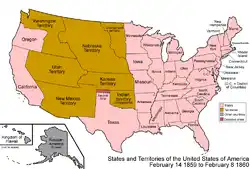
The American West refers to the period in which the United States rapidly expanded west from the East Coast region where the country had been founded all the way to the Pacific Ocean. Generally the acquisition of land and mapping out of the American West occurred in the first half of the nineteenth century, with the mass-migration to and settlement of the region west of the Mississippi River and the Great Lakes then occurring in the second half of the nineteenth century. All of this was fuelled by a voracious quest for land and opportunity largely driven by the millions of immigrants that arrived to the East Coast port cities from Europe every decade between the 1840s and the 1900s. Where US settlement west of the Mississippi and the Great Lakes had been very slim prior to the 1840s, by 1900 there were well over ten million people of European descent living in large numbers there. The American West is also often defined as a time and place with a distinct culture and society, but it was much more regionally diverse than the clichés of cowboys and gold and silver rush towns often allows for.[1]
The American West chronology of eventsThe American West chronology of events
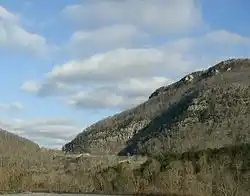
When the Founding Fathers issued the Declaration of Independence in 1776 towards the start of the American Revolutionary War, the country that they were bringing into existence was one that existed almost exclusively along the East Coast of North America, the thirteen initial states running in a direct line from New Hampshire in the north to Georgia in the south. Admittedly, there were already some intrepid pioneers who were pushing out west beyond the Cumberland Gap to begin settling parts of what would later become Kentucky, Tennessee and West Virginia, but the process of expansion did not accelerate really until after the War of 1812 when large droves of settlers headed to the southern shores of the Great Lakes and settled in large numbers in places like Chicago and St Louis.[2]
Three major events in the first half of the nineteenth century opened up vast new swathes of territory to the United States. Firstly, in 1803 the government of President Thomas Jefferson completed the Louisiana Purchase from France, bringing half a billion acres of territory stretching from Louisiana in the south to the Dakotas in the north theoretically under US control, though the Plains Indians would have much to say in opposition to this for over half a century.[3] Secondly, the Indian Removal Act of 1830 and the quasi-genocidal Trail of Tears that followed saw the removal of huge numbers of Native Americans west of the Mississippi River and the expansion into Alabama, Mississippi, Louisiana and other regions like this.[4] Finally, the Mexican-American War of 1846 to 1848 saw the US acquire the region running from Texas all the way west to California and Oregon. Through these events the American government acquired most of the territory lying within the continental United States today and then opened it up towards mass migration by extending the US’s frontier westwards to the Great Lakes and the Mississippi River by the end of the 1830s.[5]
Beginning with the California Gold Rush of the late 1840s and early 1850s people began flocking to the new territories. A broad number of socio-economic factors were driving this. Firstly, the introduction of vaccines and modern medicine to Europe led to a population boom there and the Americas became the safety valve that dealt with Europe’s excess population. Tens of millions of Irish, Italian, German, Jewish, Polish and Hungarian migrants, amongst others, arrived to the East Coast between the 1840s and the 1910s and a substantial proportion of them then headed further west to places like Texas, Oklahoma, California, Oregon and the Dakotas.[6]
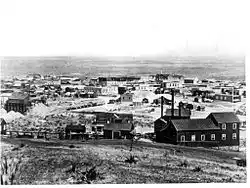
Secondly, there were a series of gold, silver and oil rushes in various parts of the American West which drove the migration. One thinks here of the aforementioned California Gold Rush and the California Oil Rush that followed in the 1870s, the Black Hills Gold Rush in the Dakota Territory in the 1870s and 1880s, the Tombstone Silver Rush of the 1870s and 1880s and the Texas and Oklahoma Oil Rushes of the 1900s. These saw hundreds of thousands of people arriving to California, the Dakotas, Arizona, Texas and Oklahoma between the late 1840s and the early 1910s in search of their fortune.[7]
Finally, the mass-migration was aided and abetted by social and technological developments. Quite simply, all of this would not have been possible had it not been for the development of the railways and steamships from the 1830s onwards, while other forms of mass-communication such as the telegraph and even the deployment of electricity also made it much more possible for major settlements to spring up in places like Arizona, Oregon and Utah.[8]
The American West is often depicted as being a time and place with a distinct culture, one in which trains pulled into gold and silver prospecting towns filled with saloons visited by lawless cowboys. This is perhaps true of some parts of the American West like Tombstone in the early 1880s or Deadwood in the Black Hills in the 1870s. However, the reality was often very different in other places. California was already every bit as ‘civilized’ as parts of the East Coast by the 1880s, while other places like Utah were home to peculiar religious movements out in the sweltering desert rather than anything like the cowboy ranches of New Mexico. Ultimately, life was as diverse here as its geography and the term ‘The American West’ can often be somewhat misleading.[9]
Extent of migration to the American WestExtent of migration to the American West
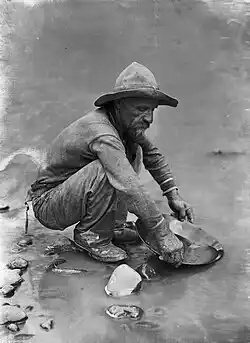
The extent of the migration associated with the American West was enormous and was not simply a matter of people moving out westwards from places like New York, Philadelphia, Charleston and Chicago to Texas, California or the Dakotas. For starters, many people didn’t travel by land. Approximately half of the 300,000 people who flocked to California at the end of the 1840s and through the 1850s, the 'Forty-Niners' as they became known, arrived to the West Coast by sea, having taken ship from ports like New York and Boston south to either Panama, where they made a quick land passage across the isthmus before heading north again, or going fully south to go around Cape Horn at the very southern end of the Americas and then all the way back up again.[10]
Over time, once railway lines were laid down to begin connecting the western territories with Chicago, St Louis and beyond them to New York and Boston, most people arrived by land. They came from far and wide. We are all familiar with the fact that millions of Irish and Italians arrived to the United States from the 1840s onwards. While they are synonymous with cities like New York, Boston, Chicago and Philadelphia, many did also head out west and settle in large numbers in places like Kansas City in Missouri, Little Rock in Arkansas, Butte in Montana and various parts of California.
There were many others. While the Irish and Italians were the largest groups, they were nearly matched by German, Polish and Jewish migrants from Eastern Europe in the 1880s, 1890s and 1900s, many of whom stayed in the cities of the East Coast, but substantial proportions of which headed out further west. Beyond these, groups like the Hungarians, Romanians, Norwegians, Swedes, Danes and Czechs might have been more minor contributors to the westward migration in the US between the 1840s and 1910s, but they still all contributed tens of thousands of settlers.[11]
Demographic impact of the westward migrationDemographic impact of the westward migration
The demographic impact of all of this migration was enormous. In 1848, when the Mexican-American War ended, the vast region from the Great Lakes and Mississippi River westwards to the Pacific Ocean had still only experienced very limited settlement by people of European heritage. Most of those who fit into such categories were primarily of Hispanic ethnicity and lived in places like Texas and California which formed part of either the Spanish Empire or Mexico up to 1848.[12]
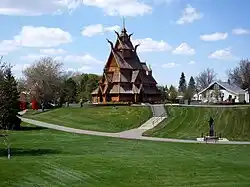
A half a century later, in 1900, that had all changed. There were well over ten million people of European heritage living in the American West. Some states had experienced more settlement than others. There were one and a half million people in California, the original boom-time state of the American West. Texas was home to three million people, a symptom of having already had a significant enough colonial population in the first half of the nineteenth century. Neighboring Oklahoma was home to over three-quarters of a million people, while Washington and Oregon had over 500,000 and 400,000 residents respectively. Others were more thinly populated. Just over 92,000 people were recorded as living in Wyoming in the federal census at the turn of the century.[13]
Some of this settlement was profoundly ethnically based. The states of the Great Plains, North Dakota, South Dakota, Montana, Minnesota, Nebraska and Idaho became the homeland in America of people from Germany, Norway, Sweden and other parts of Northern Europe. Utah was settled in very large numbers by Danish people associated with the Church of Latter Day Saints, as the Mormons had engaged in a proselytizing mission in Denmark. This part of America, between the Great Lakes west to Washington State, retains its Germanic and Nordic ethnic basis to this day. The demographic impact of the American West is everywhere to be seen in modern America and has shaped the genealogy and family histories of a great many Americans.[14]
See alsoSee also
Explore more about the American WestExplore more about the American West
- 1850 United States Federal Census records collection on MyHeritage
- 1900 United States Federal Census records collection on MyHeritage
- United States Newspapers from OldNews.com records collection on MyHeritage
- Western United States Marriage Index, 1838-2016 records collection on MyHeritage
- Utah Newspapers, 1850-2003 records collection on MyHeritage
- Georgia: Gateway to Western Expansion at Legacy Family Tree Webinars
- Entering the Old Northwest Territory: The First American West at Legacy Family Tree Webinars
- Researching Oregon Trail Ancestors at Legacy Family Tree Webinars
References
- ↑ https://www.history.com/topics/19th-century/westward-expansion
- ↑ https://www.thoughtco.com/cumberland-gap-geography-1435717
- ↑ https://www.archives.gov/milestone-documents/louisiana-purchase-treaty
- ↑ https://www.history.com/topics/native-american-history/trail-of-tears
- ↑ https://www.archives.gov/milestone-documents/treaty-of-guadalupe-hidalgo
- ↑ https://pubmed.ncbi.nlm.nih.gov/6679655/
- ↑ https://www.loc.gov/collections/meeting-of-frontiers/articles-and-essays/development/mining-in-the-west/
- ↑ https://www.history.com/news/transcontinental-railroad-changed-america
- ↑ Paul Christensen, ‘The “Wild West”: The Life and Death of a Myth’, in Southwest Review, Vol. 93, No. 3 (2008), pp. 310–325.
- ↑ Raymond A. Rydell, ‘The Cape Horn Route to California, 1849’, in Pacific Historical Review, Vol. 17, No. 2 (May, 1948), pp. 149–163.
- ↑ Frederick C. Luebke (ed.), European Immigrants in the American West (Albuquerque, 1998).
- ↑ https://www.history.com/topics/us-states/california
- ↑ http://www.demographia.com/db-state1900.htm
- ↑ http://digitalexhibits.libraries.wsu.edu/exhibits/show/2016sphist417/immigration/germans-and-scandinavians

